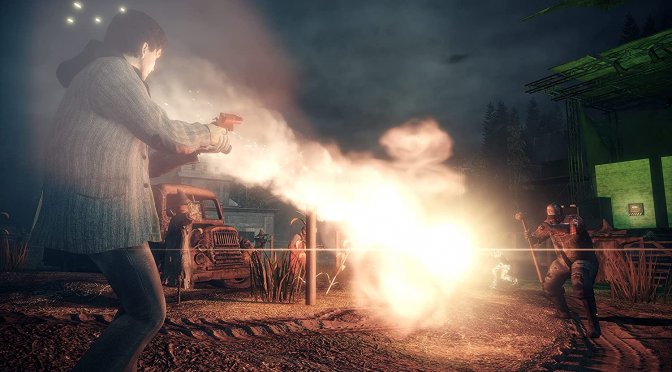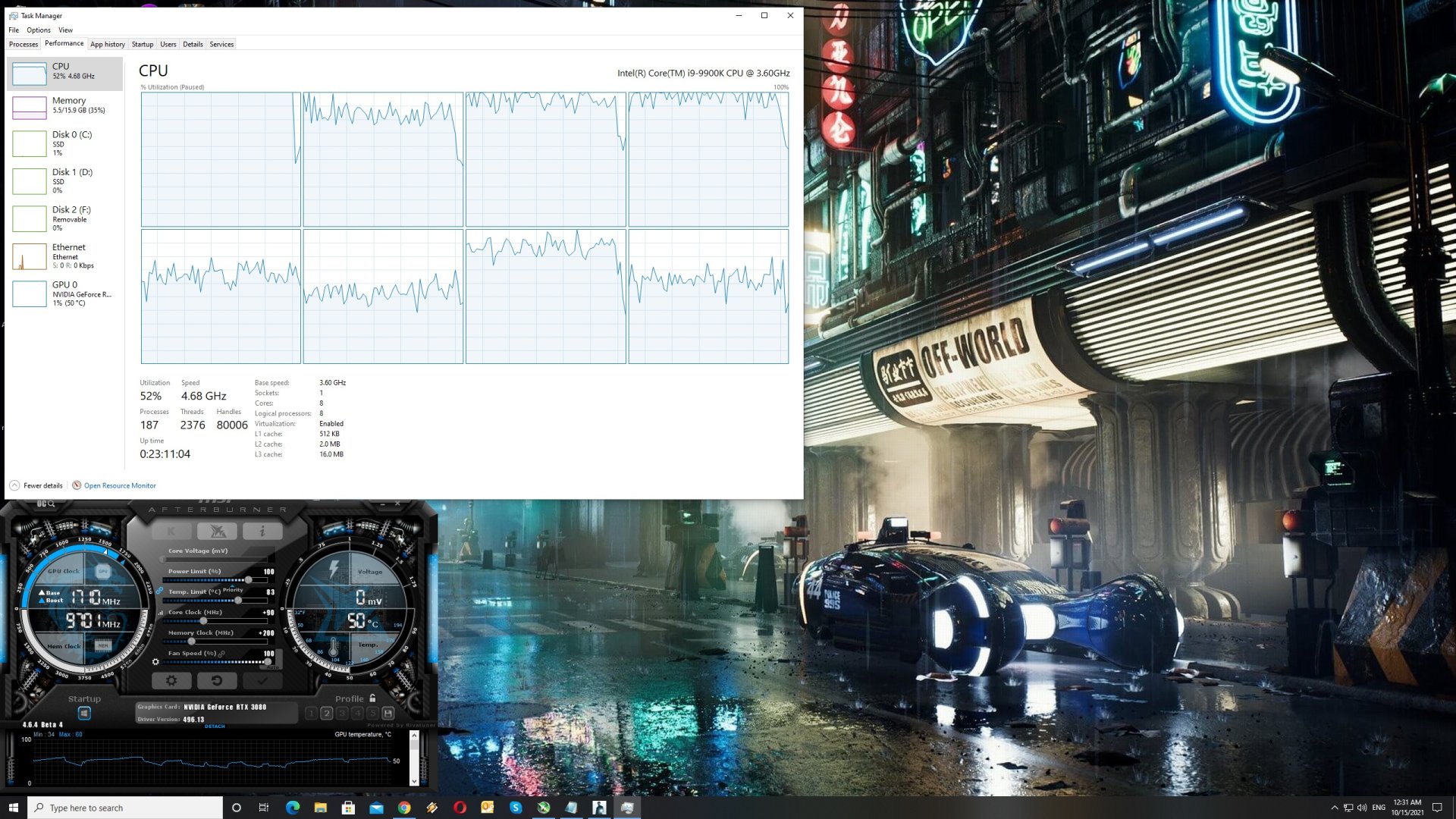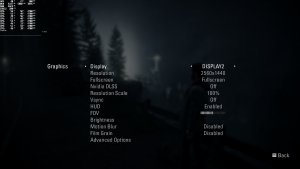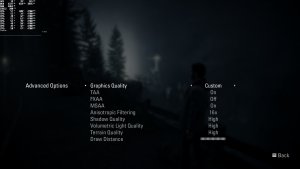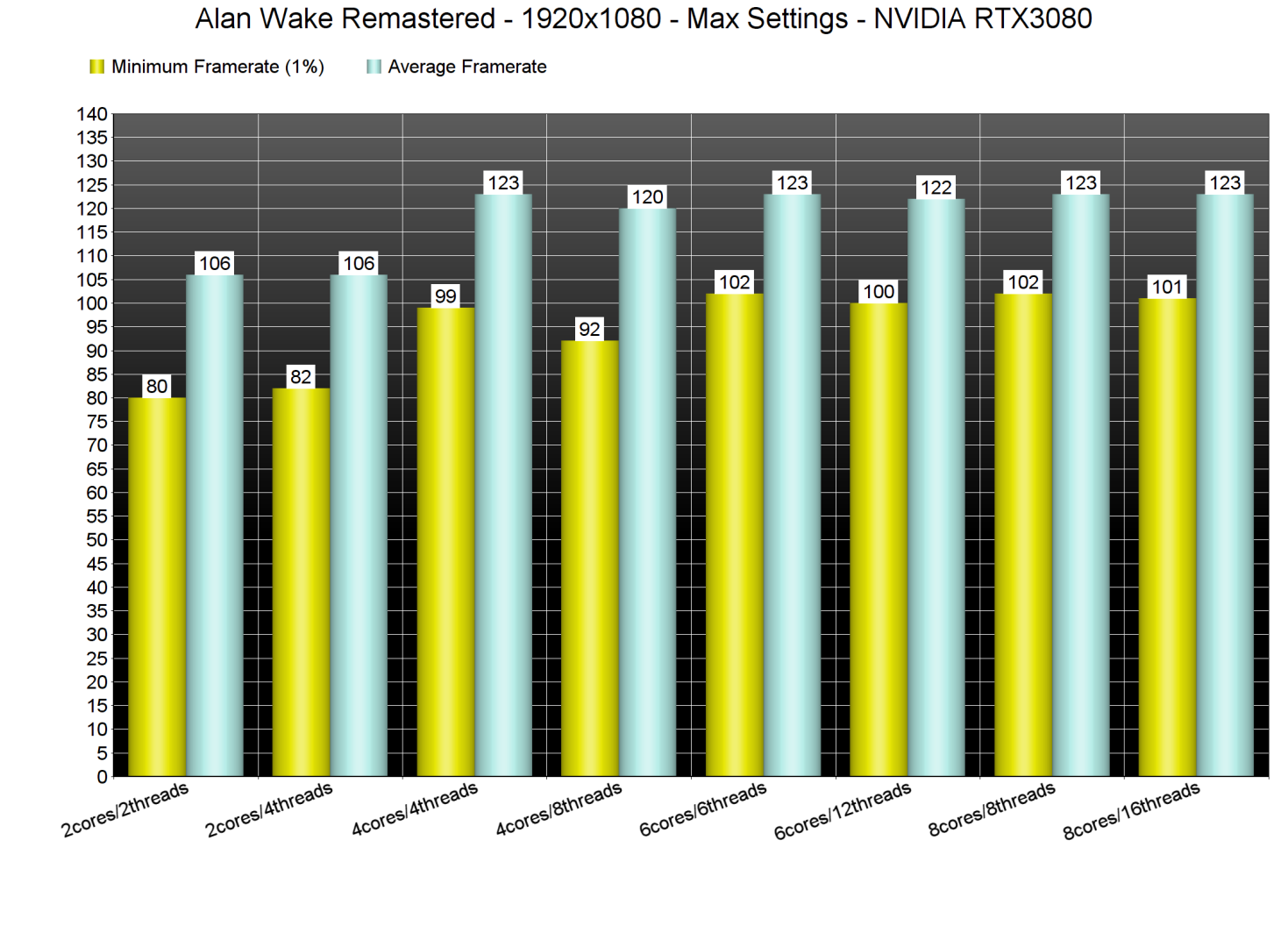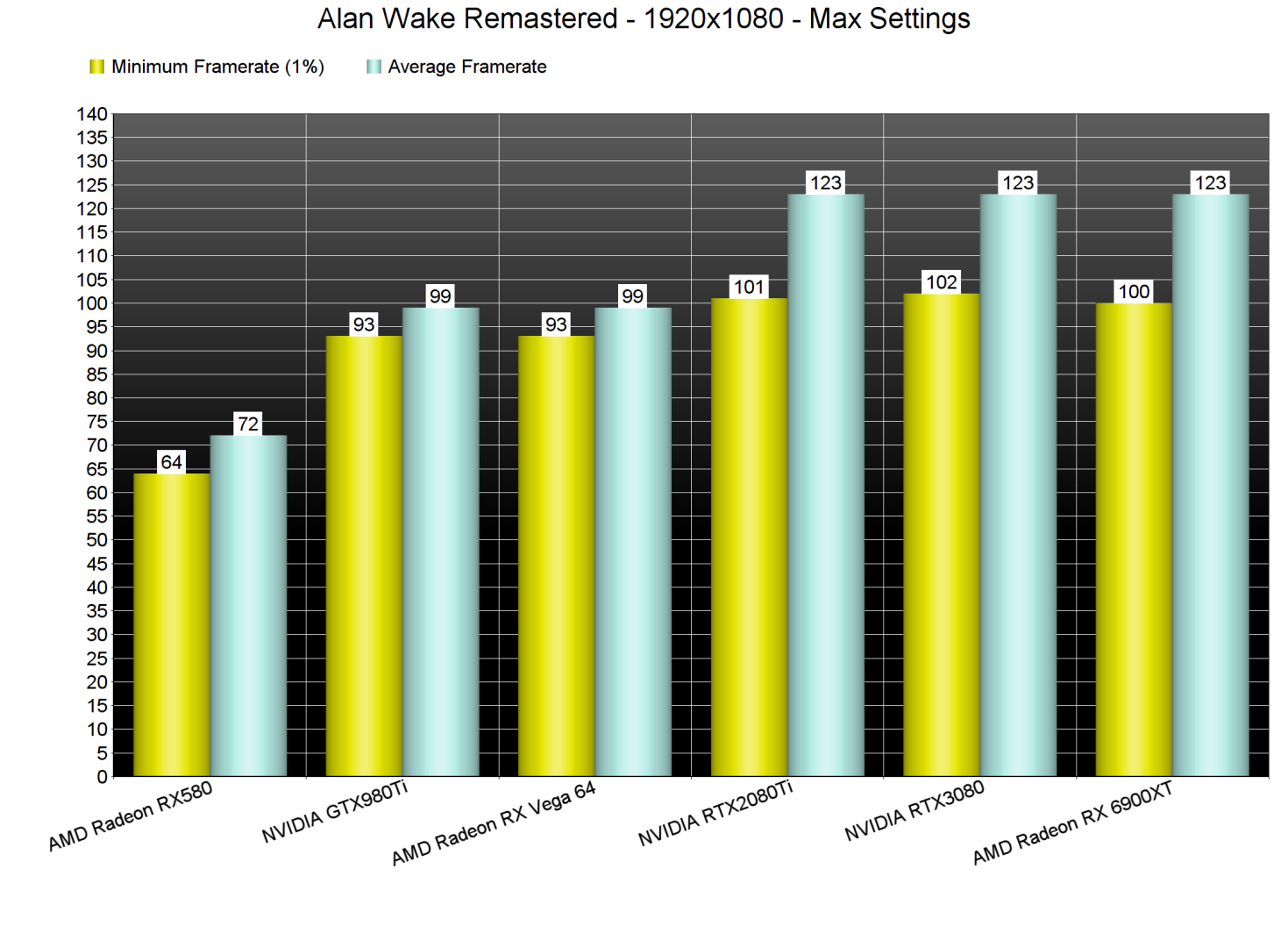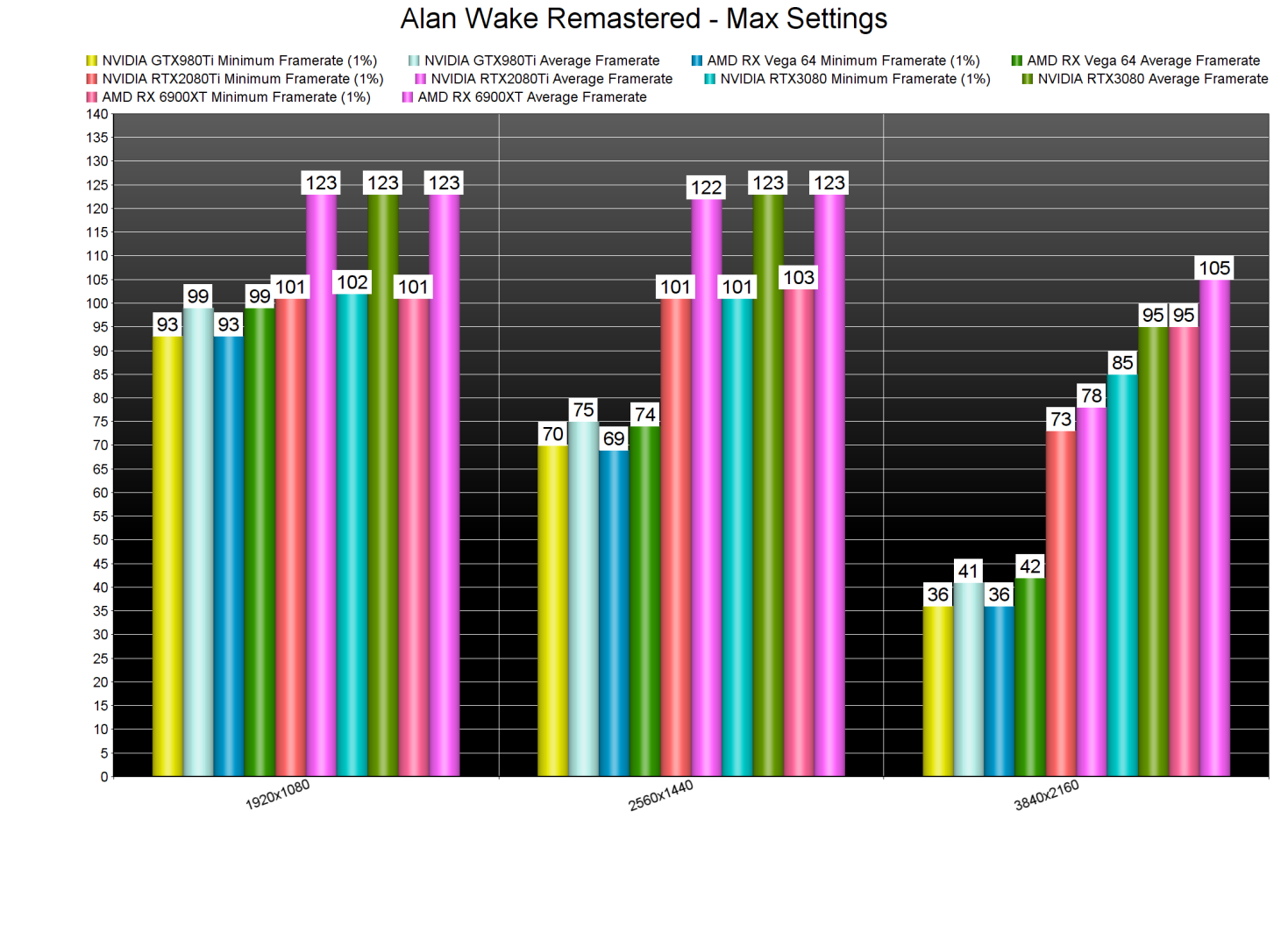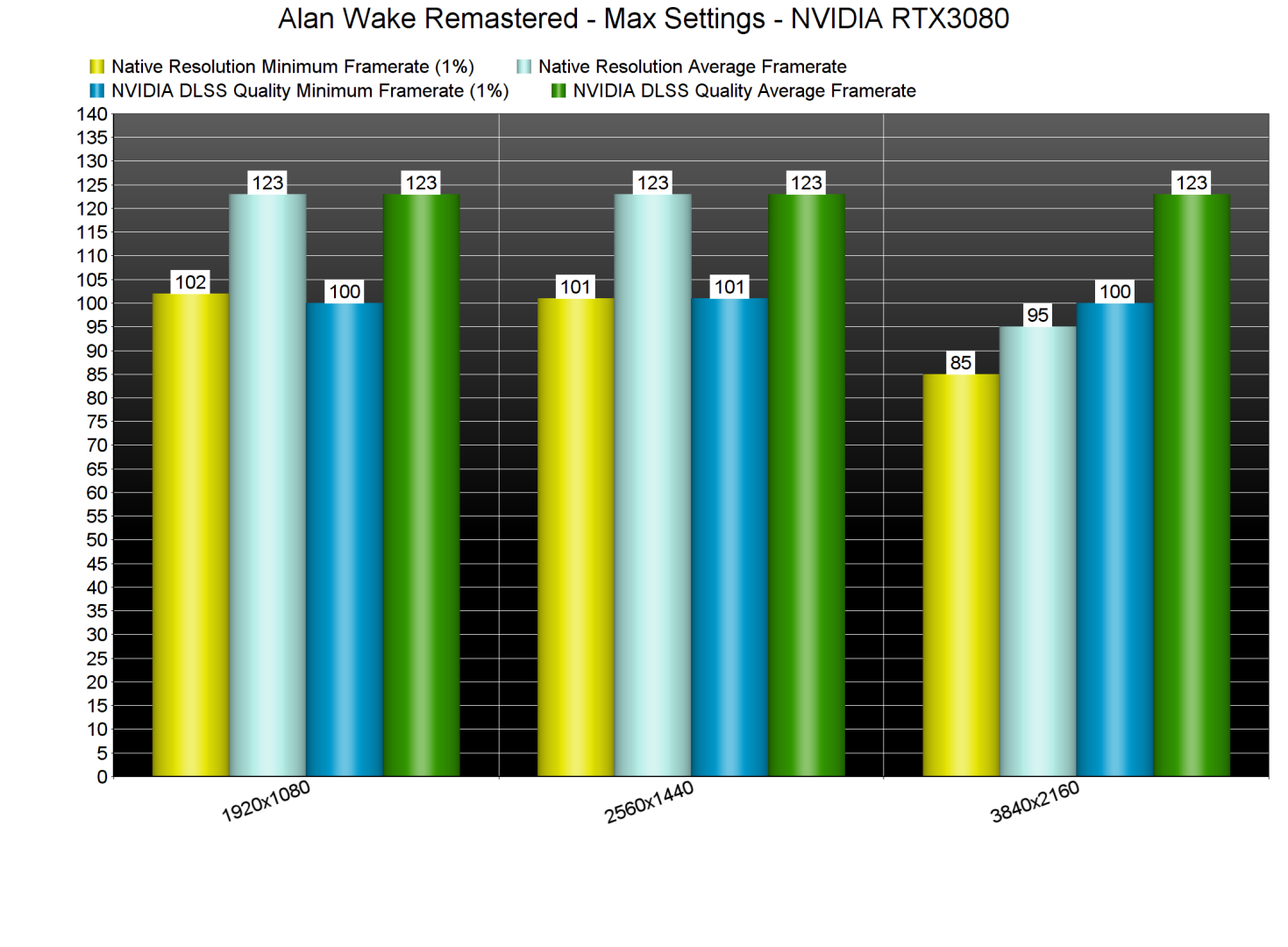Remedy has released a remastered version of Alan Wake on current-gen platforms. Alan Wake Remastered uses the same engine that Remedy used in the original game, and not the Northlight Engine. As such, it’s time now to benchmark it and see how it performs on the PC platform.
For this PC Performance Analysis, we used an Intel i9 9900K with 16GB of DDR4 at 3600Mhz, AMD’s Radeon RX580, RX Vega 64, RX 6900XT, NVIDIA’s GTX980Ti, RTX 2080Ti and RTX 3080. We also used Windows 10 64-bit, the GeForce 496.13 and the Radeon Software Adrenalin 2020 Edition 21.10.2 drivers.
Remedy has added a few graphics settings to tweak. PC gamers can adjust the quality of Anisotropic Filtering, Shadows, Volumetric Lights, Terrain and View Distance. There are also options for Anti-Aliasing, Motion Blur and Film Grain. Furthermore, the game has an FOV slider, and supports NVIDIA’s DLSS tech.
In order to find out how the game scales on multiple CPU threads, we simulated a dual-core, a quad-core and a hexa-core CPU. And, surprisingly enough, a dual-core CPU can push more than 60fps, even without Hyper-Threading (though we did notice some minor stutters). The game appears to be taking advantage of up to four CPU cores/threads. Additionally, and even though it can scale up to eight CPU cores, the performance difference between a quad-core and an octa-core is non-existent.
At 1080p/Max settings, all of our GPUs were able to provide a smooth gaming experience. Yes, even an AMD Radeon RX580 can provide a silky smooth constant 60fps experience.
At 1440p/Max Settings, our top five GPUs had no trouble at all running the game. However, it’s worth noting that the Vega 64 did not perform that great (as the GTX980Ti was as fast as it). As for 4K/Max settings, our RTX2080Ti, RTX3080 and RX 6900XT provided a constant 60fps experience.
As said, Alan Wake Remastered supports NVIDIA DLSS. However, the DLSS implementation is not that great in this title. This “implementation” has nothing to do with the DLSS version that the game uses (FYI, it uses V2.2.18.0). In other words, you won’t be able to improve the image by simply replacing the DLSS dll file. Below you can find some comparison screenshots between 4K native (left) and DLSS Quality (right). While the DLSS screenshots have less aliasing, they look noticeably blurrier. Even inside the cabin, you can notice how much sharper the native screenshots look.
Performance-wise, DLSS brings a noticeable boost. At 4K/Max settings, we saw a 30% increase. As such, we suggest enabling it only if you have a mid-tier GPU and want to play at really high resolutions. If you can hit 60fps in your native resolution, we suggest disabling DLSS (or using a sharpening filter in order to further sharpen the image).
Graphics-wise, Alan Wake Remastered looks noticeably better than the original version. However, we were really disappointed by the lack of Ray Tracing. Alan Wake came out in X360, so it could benefit from some ray-traced global illumination and ray-traced ambient occlusion effects. Regardless of that, the game looks fine. Remedy has increased the polygons for a number of objects, improved almost all textures, and changed most character models.
All in all, Alan Wake Remastered can run smoothly on a wide range of PC configurations. The game does not require a high-end CPU or GPU for gaming at 1080p/Max Settings. Not only that, but owners of weaker RTX GPUs can use DLSS in order to further improve performance. And even though the remaster is nowhere close to the incredible remasters of Modern Warfare 1&2, it looks better than the original version.
Enjoy!

John is the founder and Editor in Chief at DSOGaming. He is a PC gaming fan and highly supports the modding and indie communities. Before creating DSOGaming, John worked on numerous gaming websites. While he is a die-hard PC gamer, his gaming roots can be found on consoles. John loved – and still does – the 16-bit consoles, and considers SNES to be one of the best consoles. Still, the PC platform won him over consoles. That was mainly due to 3DFX and its iconic dedicated 3D accelerator graphics card, Voodoo 2. John has also written a higher degree thesis on the “The Evolution of PC graphics cards.”
Contact: Email

